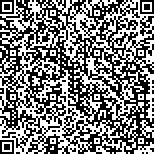下载中心
优秀审稿专家
优秀论文
相关链接
首页 > , Vol. , Issue () : -
摘要

植被干旱严重威胁着我国粮食和生态安全,卫星遥感在植被干旱监测和预警方面具有独特的技术优势,是我国进一步提升干旱灾害防御能力的重要手段。本文立足于干旱灾害系统视角,将植被干旱遥感监测方法划分为致旱因子监测法、植被状况监测法以及综合监测法三大类,并综述了当前研究现状。研究表明:1)总体发展趋势是“精细化”、“综合化”和“智能化”;2)当前主要挑战包括:植被干旱背景及特征参量的遥感空间分辨率仍然较粗、时间序列仍然较短;现有植被干旱遥感综合监测模型往往只集成了植被绿度类指标,还未能有效集成水分类、荧光类、以及温度类异常指标;植被冠层温度、绿度、水分以及荧光异常对干旱胁迫的响应规律尚未完全明确;现有植被干旱遥感综合监测模型的建立缺乏植被响应规律的约束或指导;3)未来研究方向包括:机理模型和学习模型耦合的植被干旱参量时空分辨率提升技术、基于两阶段梯形模式的植被冠层温度异常探测方法、植被干旱响应规律指导深度学习的遥感综合监测模型等。研究有助于突破干旱遥感监测关键技术瓶颈,精准服务于国家防灾减灾和生态文明建设需求。
Drought has been a serious threat to Chinese food and ecological security. Satellite remote sensing has unique technical advantages in vegetation drought monitoring and early warning, and it is an important means to further improve the defense ability of drought disaster in most countries including China. Based on the perspective of drought disaster system, this paper firstly divided the remote sensing monitoring methods of vegetation drought into three categories: drought-causing factor monitoring method, vegetation condition monitoring method, and comprehensive monitoring method. For the first category, the degree of drought was expressed mainly by measuring the degree of abnormality of the drought-causing factor, which usually utilizes a long time series of drought-causing factor data (i.e., rainfall, soil moisture, air temperature, evapotranspiration, etc.), and calculates the degree of deviation from normal for the evaluation period by taking the average state of the same period of many years as the normal state. For the second category, the degree of drought was mainly measured by the anomaly degree of vegetation condition under drought stress, where the vegetation condition includes vegetation greenness indexes, vegetation moisture indexes, vegetation fluorescence indexes, and vegetation temperature indexes. The comprehensive monitoring method mainly measures the degree of vegetation drought by integrating drought-causing factors, vegetation conditions, and environmental parameters (e.g., land cover type, agriculture irrigation, ecoregion, soil hydraulic parameters, etc.). After reviewing the current research status, we found that: 1) the overall development trend in the remote sensing of vegetation drought is ‘refinement’, ‘integration’, and ‘intelligence’, which means that the future remote sensing monitoring methods should be more faster, more sensitive, higher resolution, more comprehensive, smarter and so on; 2) The main challenges are: the remote sensing spatial resolution of vegetation drought background and characteristic parameters is still coarse, and the time series is still short and delayed. The existing vegetation drought remote sensing comprehensive monitoring models do not yet effectively integrate water, fluorescence, and temperature anomaly indicators. The response of vegetation canopy temperature, greenness, water, and fluorescence anomalies to drought stress has not been fully understood, and the establishment of existing drought remote sensing comprehensive monitoring models lacks the constraints or guidance of vegetation response laws to drought stress. 3) Future research directions include: Inversion and quality improvement of vegetation drought parameters with couple of mechanism model and learning model, vegetation canopy temperature anomaly detection technology based on two-stage trapezoidal model, and comprehensive monitoring model based on vegetation drought response law guiding deep learning algorithm. This study is helpful to break through the key technical bottleneck of drought remote sensing monitoring and accurately serve the needs of national disaster prevention and mitigation and ecological civilization construction.

